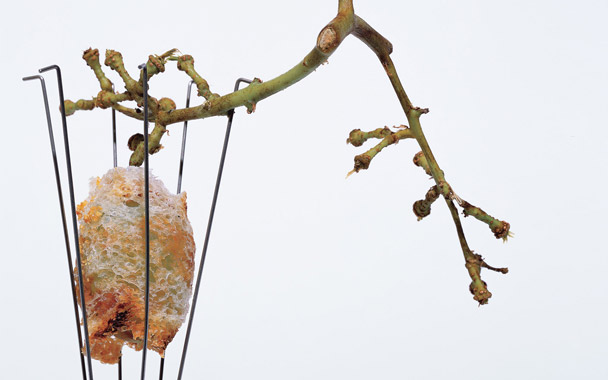Of course, that young hotshot was Grant Achatz before Alinea catapulted him to stardom.
And, apologies to my old Chef, if art is that which teaches you to see the world a little differently, then I’m ready to say that yes, the food—or, more precisely, the experience of eating—at Alinea is art.
But it’s not so simple, I don’t think. Because the really interesting question isn’t “Can cooking be art?” but rather “How does cooking function as art?” Recently, I read a post in Michael Laiskonis’s excellent blog in which he asked himself how he might translate concepts from other artistic disciplines into food. “Can two different ingredients rhyme with each other?” he asks. What would the difference be if you thought of a dish as a snapshot as opposed to a portrait? And Achatz himself is writing about his own creative questions.
There’s a lot to think about here, but I keep coming back to wondering about what cooking (or is just “cooking” too limited? What about “presenting food” or “eating?”) can and can’t do as an art. Other arts—particularly visual arts—can be ugly and derive much of their power from their ugliness. They challenge and disturb us. If they please, it is in the pleasure of finding and making meaning of how they make you feel, in thinking about the experience of the interaction. What may repel us in our emotions can take hold in our intellects.
But as eaters, our reactions to food are immediate. Our first, defining reaction to a bite is, to large degree, pre-cognitive. Some of it is hard-wired survival instinct. Have you ever tried to keep a sip of sour milk in your mouth? You just can’t, unless you’re some kind of masochist. Most toxins in nature are bitter, so bitter is the hardest taste to like.
But I wonder, too, if our reactions are trained by the fact that we eat food every day. It’s our instinct to eat, and we become unhappy when we don’t eat. Eating is the first thing for which we understand satisfaction and pleasure. It doesn’t take much hanging around with babies until you figure this out.
So can we accept food that doesn’t taste good? I’m not talking about food that isn’t delicious to you at first but that you acquire a taste for; I’m talking about food that is designed to not please, food that is meant to disturb and challenge you. (Achatz has a service piece, The Antenna—which serves a bite of food you have to bob your head for—that my friend found “degrading,” so there’s that. But the bite itself was delicious.) I don’t know. There are extreme eaters—people who eat things that are unreasonably spicy, maybe, or that are normally considered “gross”—but I’m not sure that’s about food and not about trying to prove something using food. But if we can’t accept food that is undelicious, what does that do for an art form where you have a whole range of reactions you have to avoid tapping into?


